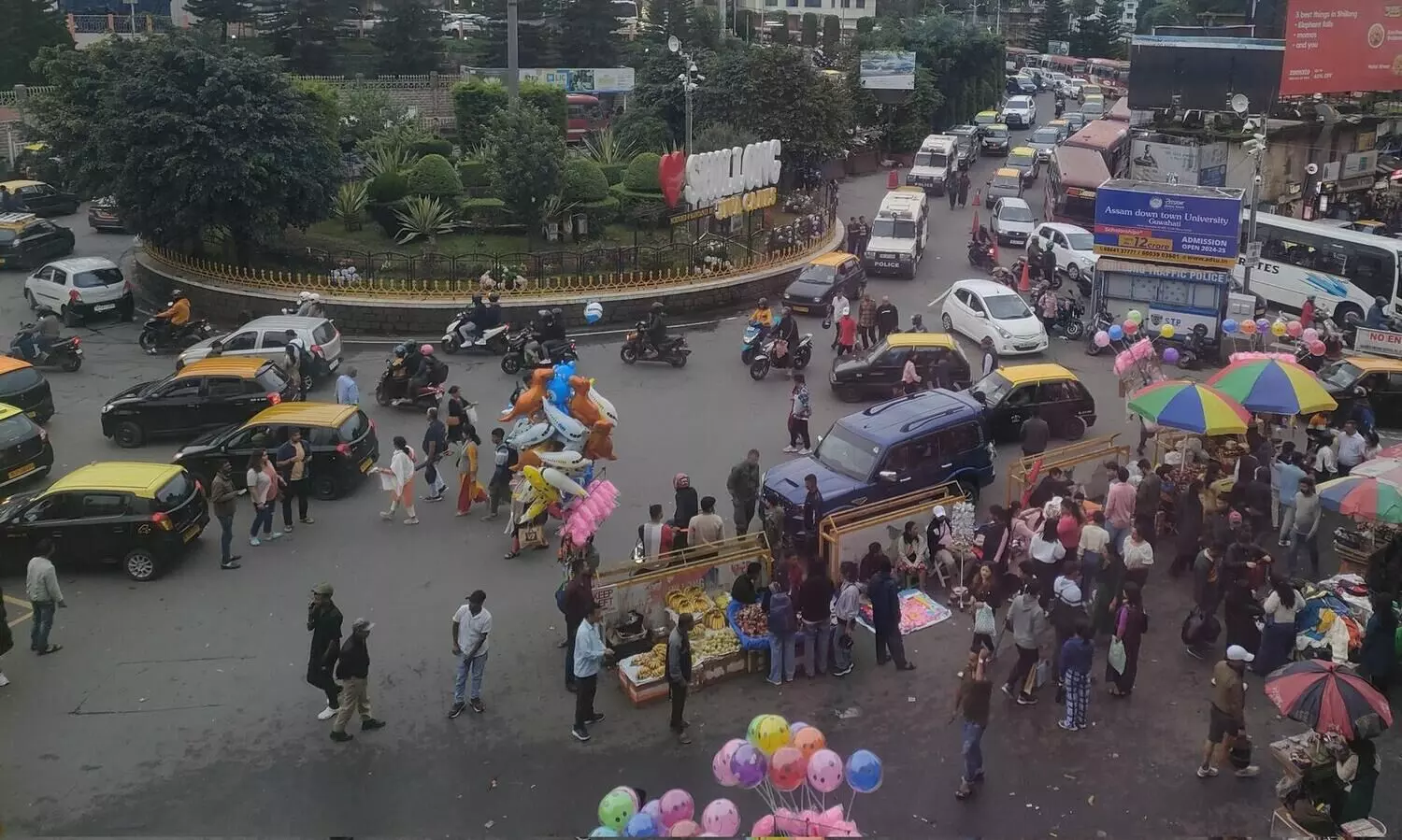Most Meghalaya households earn less than Rs 5,000 a month: Study
The study found that 25 out of 39 blocks in Meghalaya “fall under high or very high vulnerability”, identifying five key drivers for this.;

A file image of Police Bazar in Shillong. (Photo: 'X')
Shillong, July 20: Union Finance Minister Nirmala Sitharaman, during her recent visit to Meghalaya, spoke highly of the development scene in the hilly State. However, a study has revealed that the monthly income of households in most blocks is less than Rs 5,000.
Significantly, the study was conducted by the Meghalaya Climate Change Centre to assess climate vulnerability across 39 community and rural development blocks in the State.
The research titled ‘Integrated Climate Vulnerability Assessment of Meghalaya at Block Level’, has been published in Discover Sustainability, a journal published by the Europe-based Springer Nature Group.
The study found that 25 out of 39 blocks in Meghalaya “fall under high or very high vulnerability”, identifying five key drivers for this.
It found that Anganwadi centres per 1,000 hectare are few and far between in the State. “More than 50 per cent of the blocks have significantly fewer Anganwadi centres than the State average, with discrepancies as high as 145 centres between certain blocks,” the study said.
Nearly all households in these blocks report less than two per cent Kisan Credit Card coverage. Forest area varies considerably, with 28 blocks recording less than 10 square kilometres per 1,000 rural inhabitants.
“With overall irrigation coverage of only 14.45 per cent and 29 blocks below 20 per cent inadequate irrigation is a significant vulnerability driver,” the study added.
Due to insufficient financial access, inadequate public infrastructure, and scarce natural resources, “in 32 blocks, over 70 per cent of households earn below Rs 5,000 per month, underscoring pronounced sensitivity”.
The study recommended the policy-makers to prioritise interventions that improve adaptive capacities. “We recommend targeted investments in financial services and rural infrastructure, as well as enhanced institutional support to mitigate vulnerability,” the study said.
It recommended that households should get access to credit facilities, especially by increasing the penetration of Kisan Credit Cards. Rural infrastructure should be improved through investment in public services like Anganwadi centres, road networks, and irrigation systems to bolster adaptive capacity.
It further recommended strengthening institutional support by developing targeted community-based programmes that address the specific drivers of vulnerability at the block level.
By
Raju Das

